Chapter 23
From Isolation to World War II: 1930–1945
By Boundless
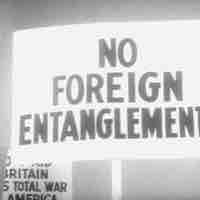
Despite the United States' participation in World War I and President Wilson's efforts to shape the terms of the post-war peace, the majority of American politicians and the American public continued to support isolationism as long as the U.S. entry into World War II seemed unavoidable.
Germany was required to pay massive reparations in the aftermath of WWI, which led to the country's devastating economic situation.
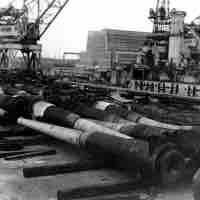
In the aftermath of World War I, many international efforts leading to disarmament were undertaken but they all eventually failed to achieve their stated goal.
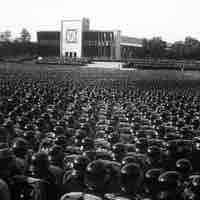
While Benito Mussolini's rise to power was linked to a chaotic struggle for political power that took place in Italy in the aftermath of World War I, Adolf Hitler took advantage of the disastrous economic situation in Germany. In both cases, nationalist rhetoric was critical to gaining popular support.
In the aftermath of World War I, Japan's ambitions to become a global power led to establishing a unique totalitarian political system that combined ancient Japanese traditions with elements of European fascism and resulted in aggressive territorial expansion.
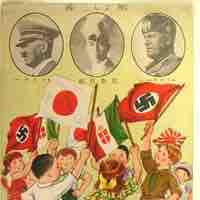
In September 1940, Germany, Italy, and Japan signed the Tripartite Pact, agreeing to provide military and economic support to each other.
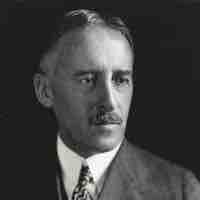
The outbreak of World War II and increasing threats from Nazi Germany and Japan changed the U.S. long-standing stand of isolationism and non-interventionism.
However, the 1941 German invasion of the Soviet Union and the exhausting offensive on the Eastern Front stalled Nazi Germany's gains and paved the way for the Allies' victory.
Blitzkrieg (German "lightning war") was a German military strategy whereby an attacking force spearheaded by a dense concentration of armored and motorized or mechanized infantry formations with close air support, breaks through the opponent's line of defense by short, fast, powerful attacks and then dislocates the defenders, using speed and surprise to encircle them.
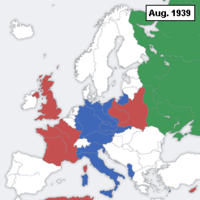
Britain's strategy military strategy evolved from the early idea of Appeasement to the active involvement on the three fronts of the European theater as a follower of the Joint Allied strategy.
The Holocaust, also known as the Shoah, was a genocide in which Adolf Hitler's Nazi Germany and its collaborators killed about six million Jews during World War II.
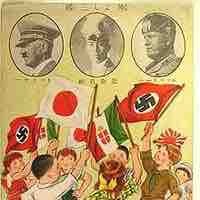
Beginning in the 1930s, Japan aggressively expanded the territories under its influence, taking over parts of China, invading territories claimed by the Soviet Union, and fighting across the Pacific during World War II.
The attack on Pearl Harbor, a surprise military strike conducted by Japan on December 7, 1941, forced the United States to formally enter World War II.
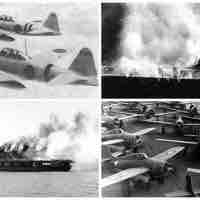
The Battle of the Coral Sea and the Battle of Midway were strategic triumphs for the Allies and marked the critical point in halting Japanese expansion during World War II.
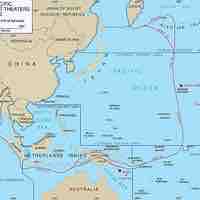
The Guadalcanal campaign of 1942-43 became a crucial victory by Allied forces in the Pacific.

During World War II, millions of American civilians were recruited by civil defense government programs to serve as volunteers and aid the war effort.

During the Second World War, the U.S. government took strong measures to convert the economy to the demands of war
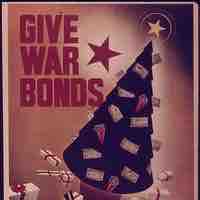
As the U.S. entered WWII, Secretary of the Treasury Henry Morgenthau began planning a national defense bond program to finance the war.
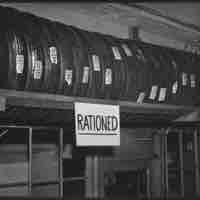
During World War II, the federal government controlled the prices of goods, wages, and war-sensitive materials like fuel and steel.
The US engagement in Europe during WWII began prior to the US formal entry into the war by supplying war materials to Allied states and continued from 1942, when the US military directly engaged in operations in Western Europe and the Mediterranean.
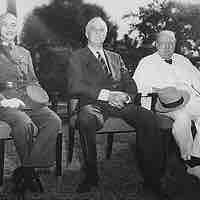
Roosevelt, Churchill, and Stalin, known as the "Big Three," developed a plan of action for Allies in a series of informal meetings and official conferences.
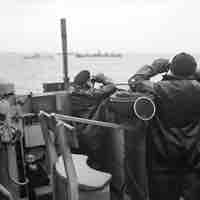
The Battle of the Atlantic was the longest military campaign of World War II, pitting the German Navy and Airforce against the Royal Canadian Navy, Royal Navy, the United States Navy, and Allied merchant shipping.
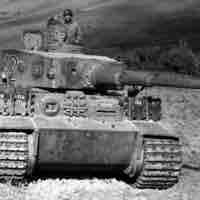
The North African Campaign of World War II (June 10th, 1940 - May 13th, 1943) resulted in the huge loss of Axis troops, which greatly reduced the military capacity of the Axis powers and led to all Italian colonies in Africa being captured.
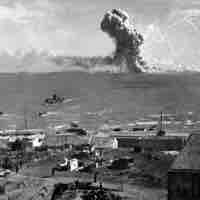
The combined British, Canadian, and American forces defeated Axis forces in Sicily, allowing the Allies to take over mainland Italy.
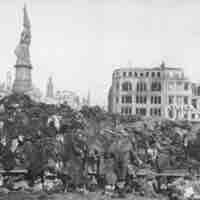
During World War II, the Allies used strategic bombing in Europe and Asia in order to impede the Axis infrastructure and war production capacities as well as terrorize civilians on enemy territories.
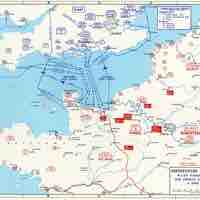
The Normandy landings, codenamed Operation Neptune and commonly know as D-Day, was the largest amphibious invasion ever to take place and it was critical to the eventual victory of the Allied forces in Word War II.
After the 1943 Battle of Stalingrad and the June 1944 Allied invasion of France, the Allies gradually defeated Germany in Europe while in the Pacific, the United States and the Soviet Union continued to fight Japan until Japanese surrender in August 1945.

The crossing of the Rhine, the encirclement and reduction of the Ruhr, and the sweep to the Elbe-Mulde line and the Alps all established the final campaign on the Western Front as a showcase for Allied superiority in maneuver warfare
Following the successful landings in Normandy (June 1944), the Western Allies gradually defeated Nazi Germany on the Western Front while the Soviet Union triumphed on the Eastern Front. The joined efforts culminated in the final defeat of Germany at the Battle of Berlin.
Leapfrogging was the Allied strategy of bypassing and isolating fortified positions by focusing on strategically important islands.
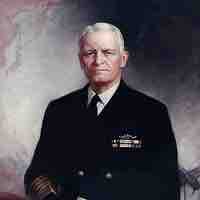
Chester Nimitz, fleet admiral of the United States Navy, played a major role in the naval history of World War II as Commander in Chief, United States Pacific Fleet (CinCPac), for U.S. naval forces and Commander in Chief, Pacific Ocean Areas (CinCPOA), for U.S. and Allied air, land, and sea forces.

Operation Cartwheel (1943–1944) was a major military strategy in the Pacific theater of World War II that aimed at militarily neutralizing the major Japanese base at Rabaul and was directed by the Supreme Allied Commander in the South West Pacific Area (SWPA)—General Douglas MacArthur.

After Japan did not respond to a threat of destruction, the United States dropped atomic bombs on the cities of Hiroshima and Nagasaki in August 1945.

After the United States dropped atomic bombs on the Japanese cities of Hiroshima and Nagasaki and the Soviet Union declared war on Japan, Emperor Hirohito surrendered.
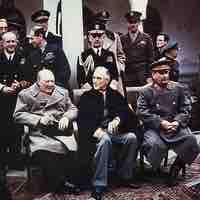
Convened in 1945, the Yalta Conference brought together Roosevelt, Churchill, and Stalin to discuss the postwar reorganization of Europe.
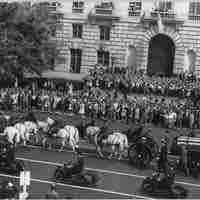
Roosevelt's fourth term, ended by his death only three months after inauguration, was dominated by negotiating the postwar settlement with Great Britain and the Soviet Union.
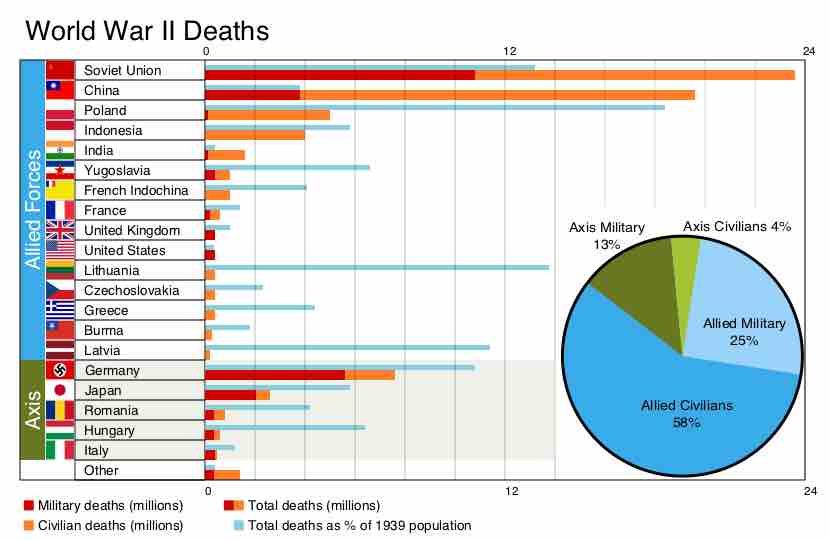
While estimates remain controversial and statistics unreliable, World War II was the deadliest military conflict in history, with around 50 - 80 million people killed.
The domestic war effort in the United States swept millions of women into the workforce.
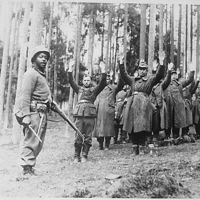
Despite racism and segregation in the U.S. military, over two and a half million African American men registered in the military draft, with more than 1 million serving in the armed forces during World War II.

Hundreds of thousands of Hispanic American men and women served in the U.S. Armed Forces and on the home front during World War II.
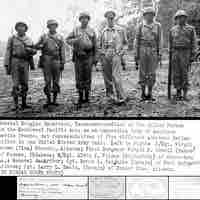
Some 44,000 Native Americans served in the United States military during World War II, which was one-third of all able-bodied Indian men.

Suspicion of and racial prejudice toward Japanese-Americans after Japan's attack on Pearl Harbor resulted in the incarceration of around 110,000 Japanese-Americans and Japanese residing in the United States.
